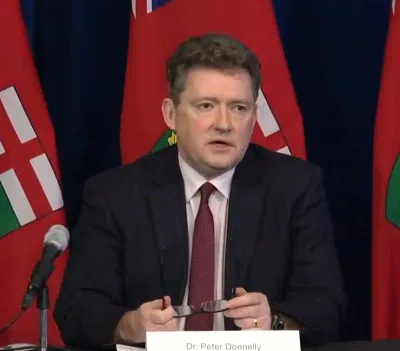Currently, Wellington-Dufferin-Guelph Public Health breaks down its jurisdiction’s positive COVID-19 cases based on counties (Wellington & Dufferin) and city (Guelph), but some residents want more granular data.
At myFM News, listeners have sent emails inquiring about the number of coronavirus cases in Orangeville.
Wellington-Dufferin-Guelph Public Health says it won’t divulge that information out of concern of identifying the case.
Mono deputy mayor, John Creelman also thinks Dufferin residents should be privy to that level of COVID-19 data breakdown.
Creelman believes Dufferin County’s population is too large to risk identifying a positive case and when compared to health units who serve sparsely-populated Canadian communities, the risk is much higher.
COVID-19 transparency at provincial and federal level
This week, Ontario premier Doug Ford asked Ontario Health officials to release projections of deaths caused by COVID-19 under various theoretical scenarios.
Ford promised Ontarians transparency with the move, and hoped it would be a wake-up call to citizens who continue to gather in clusters at beaches, parks and other public spaces.
Meanwhile, the federal government is receiving flack for not following suit, and releasing national COVID-19 projections.
But Creelman says comparing the entire country’s population makeup to that of Ontario’s, is like comparing apples to oranges.
Creelman reminds the extrapolated data comes from theoretical models based on positive COVID-19 tests, and doesn’t necessarily depict an accurate long-range COVID-19 impact.
Creelman says other countries like Japan and South Korea have been much more diligent in recording these tests from its population, and has been able to glean a clearer picture of their COVID-19 futures.

Dr. Peter Donnelly
COVID-19 projections according to Ontario Health
On Friday afternoon (Apr. 3), president and CEO of Public Health Ontario, Dr. Peter Donnelly revealed the province’s COVID-19 projections under various scenarios.
Worst case scenario, he said had Ontario not implemented any restrictions and closures, the province’s death toll would reach 100,000.
Under another hypothetical scenario in which Ontario pulls all the stops to mitigate the spread of the virus, the death toll would sit between 3,000 to 15,000 in 2-years time.
That’s the best case scenario.
Vouching that the province’s current measures are having an impact, Dr. Donnelly said had Ontario not placed any restrictions, it would be left reeling with a 300,000 death toll by April 30th.
He added that the pandemic could last 18 months to 2 years.
Public Health Ontario stressed that these projections are based on theoretical models and not on actual data, thus they do not accurately predict the province’s COVID-19 deaths.
















